I don't know why I'm even doing this except that I had my camera in my coat pocket when I went for my afternoon walk.
Does yellow foliage make you think a plant looks sick and overwatered? I know someone who feels that way.
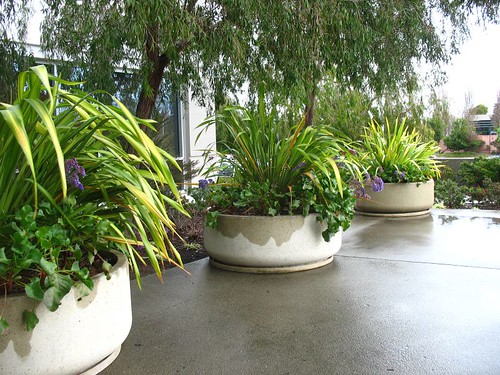
Agonis flexuosa (right?) and Raphiolepis indica.
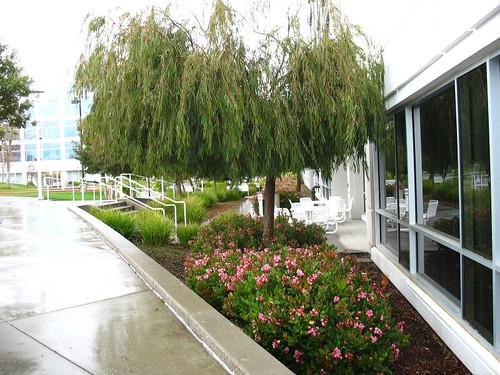
You may recall that I marked down raphiolepis in the "hate column" of workhorse landscape plants. I've changed my mind. I like the bounty of pink flowers in winter and, more, I like the black fruit that follow the flowers.

But the peppermint willows can go. What's up with the leggy crown on top of the heavy skirt? This tree reminds me of a badly pruned dog.
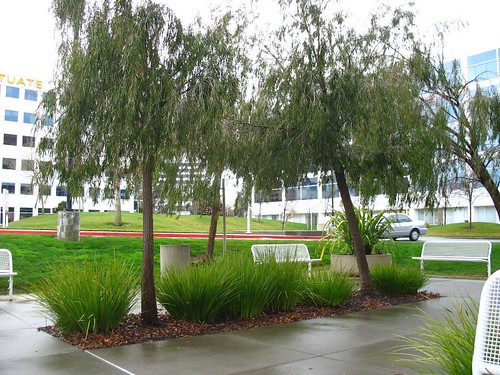
Three groundcovers: Vinca major, Cotoneaster horizontalis, and some kind of scrubby gray juniper.

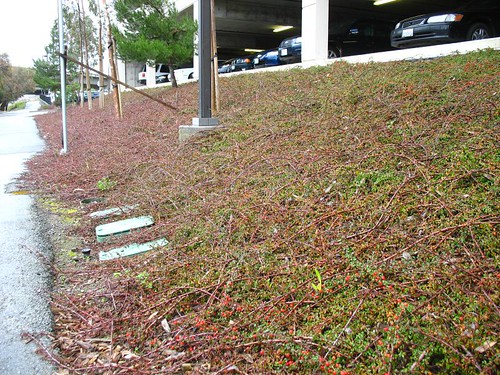

A better use of the Cotoneaster--breaking it up asymmetrically with whatever that green monocot is. This is actually nice. Although too bright.
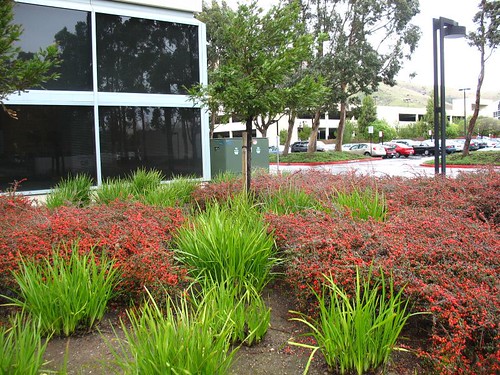
Better than any of them tho' is this Ceanothus. I have to get better at identifying different species of Ceanothus.

Bees love the powdery blue flowers on this native. And it forms a nice thicket for birds. Because this is a native bed, I think it must be part of Genentech's landscaping; they use a lot of natives, and whoever they've got really knows what he's doing. Genentech has to-die-for landscaping. Unfortunately, they just have one building and a parking lot near my office.
These firs will be fabulous when they reach full height. (Nothing here is more than 10 years old, as far as I know.)

Good selection to obscure the parking lot. Hopefully they can take the wind. It's very windy here (partly due to the building architecture and site design, I'm sure) and there are some ill-considered trees for this windy site.
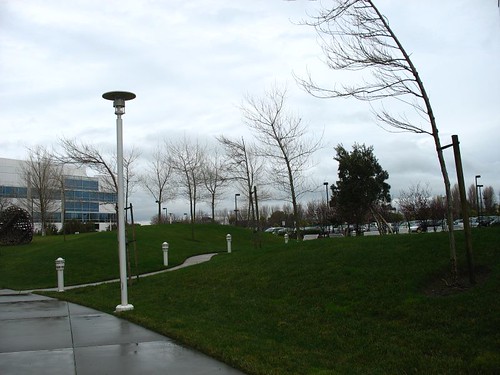

And some poor aboriculture practices.
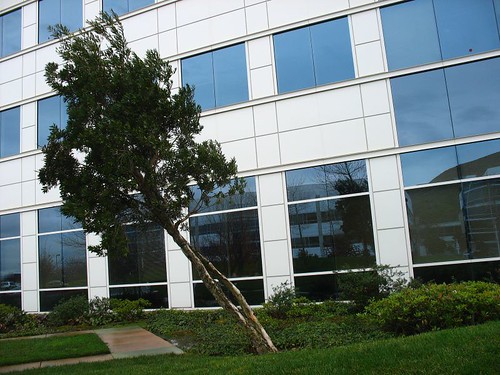
On the other hand, this Myoporum laetum is downright cute.

I think must be a fortuitous combination. Would you ever think to put these three plants together? I wouldn't.

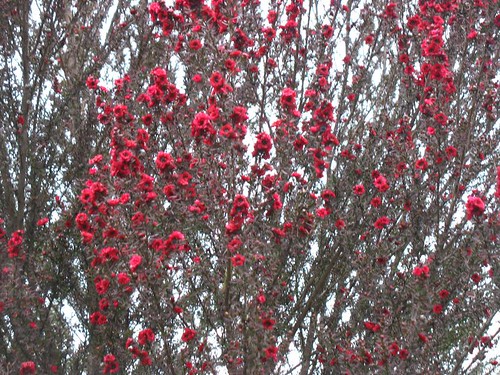
I've never seen this particular bottlebrush until I started working here. We have quite a lot of it in the office landscape.
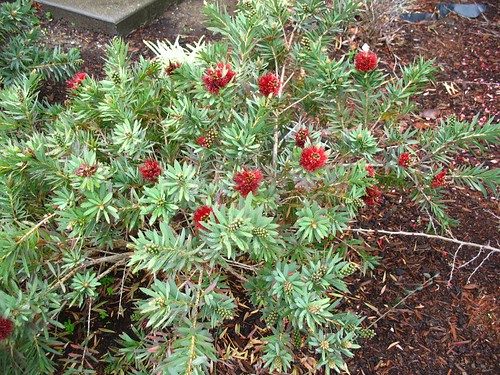
In my building's lobby...Ficus lyrata (two of them in fact)

And some...bromeliads. Ahem.
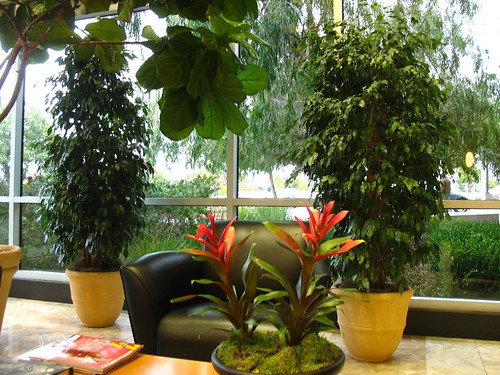

5 comments:
The office park landscape is really quite nice when you look at it in more intimate detail. I imagine it feels different, more sterile driving around the parking spaces in your car. It is a good thing that building codes have made such beautification required. Was I seeing a lot of clumps of Dietes in these landscapes?
It is no wonder you have such Bromeliad envy after looking at those office specimens day after day.
Perhaps it is Dietes and I just don't recognize it because it's so well maintained and I'm so used to seeing it in terrible states of neglect.
I do like to see what is offered up to the public in landscaped areas. Your office area has a lot of variety and looks tended. Very nice.
I like the yellow leaves in very small doses. That's not bad in those planters. Catches the eye, as it is supposed to.
There's some gorgeous Aussie natives mixed in this landscape Chuck. Annie from The Transplantable Rose sent me here to check out your Agonis Flexuosa's. They certainly look right at home in your neck of the woods as they do in my backyard.
BTW - great photos and interesting post. I'll be back.
Yes, that was Dietes bicolor with the Myoporum laetum. They aren't quite so ragged and prone to "dry-back" as the Dietes vegata you are thinking of, perhaps. Nice pics. I'm stealing a couple for a client presentation.
Post a Comment